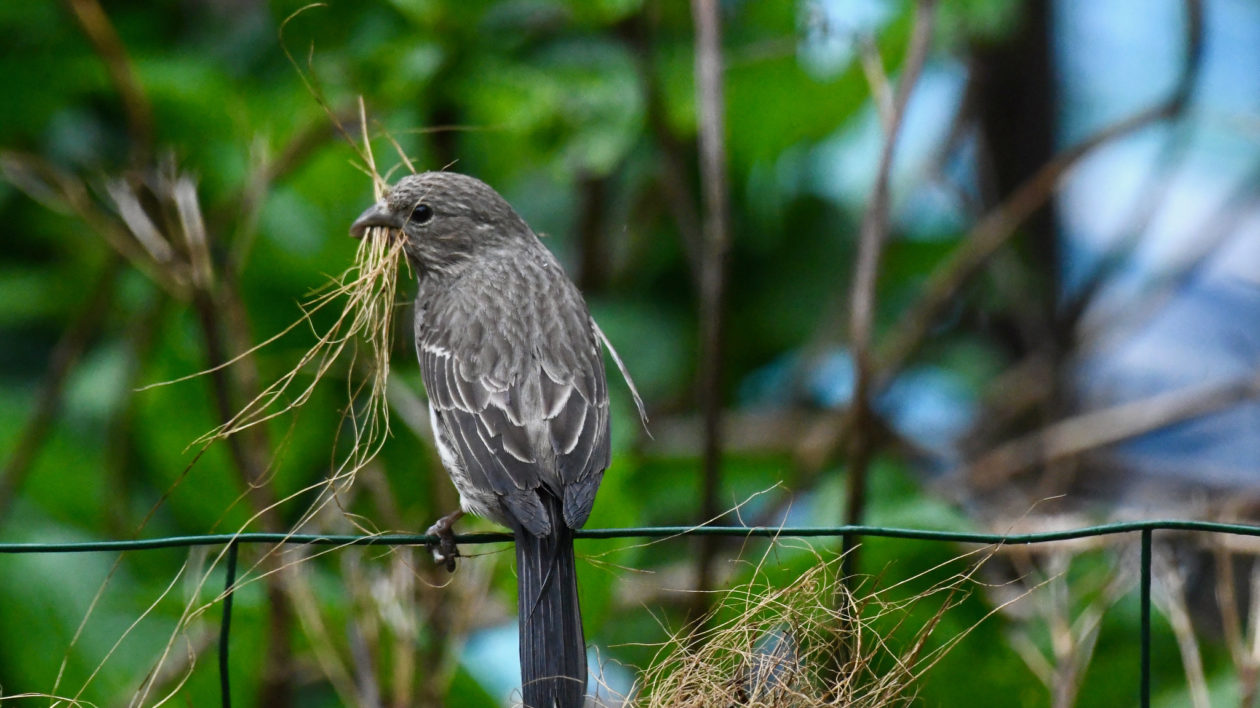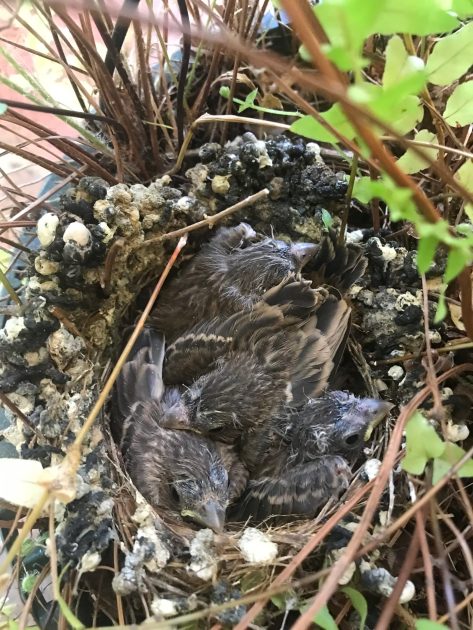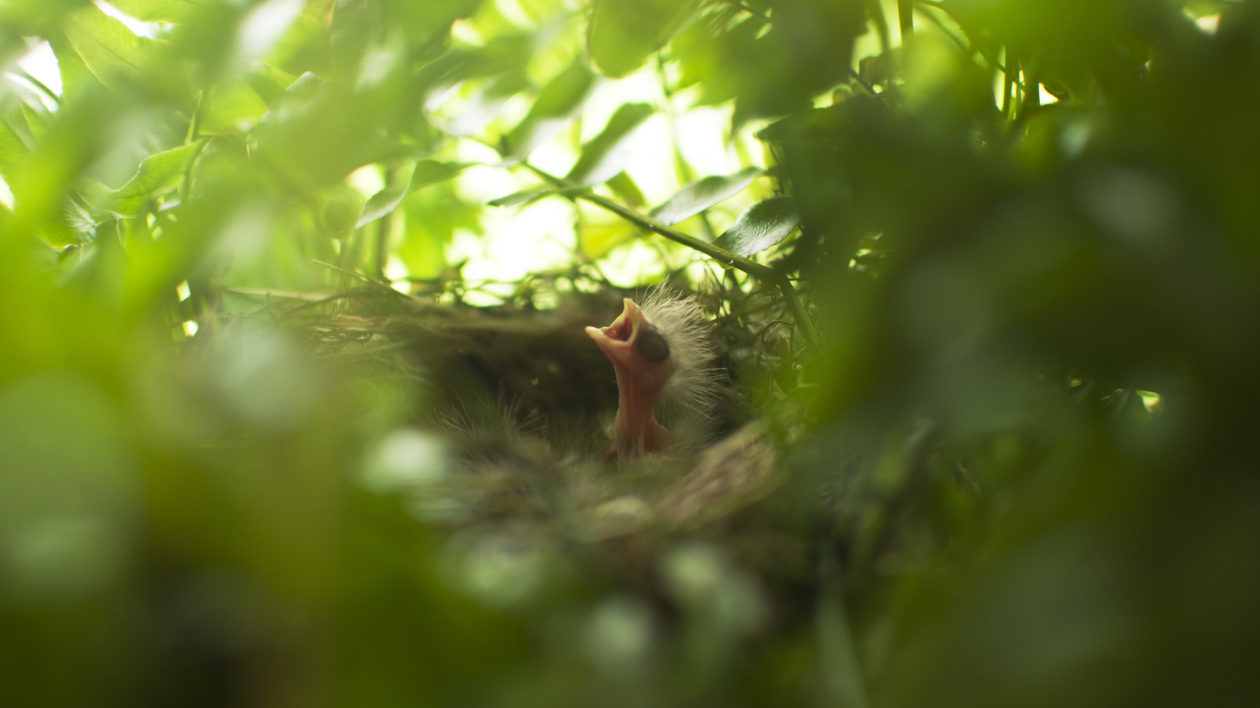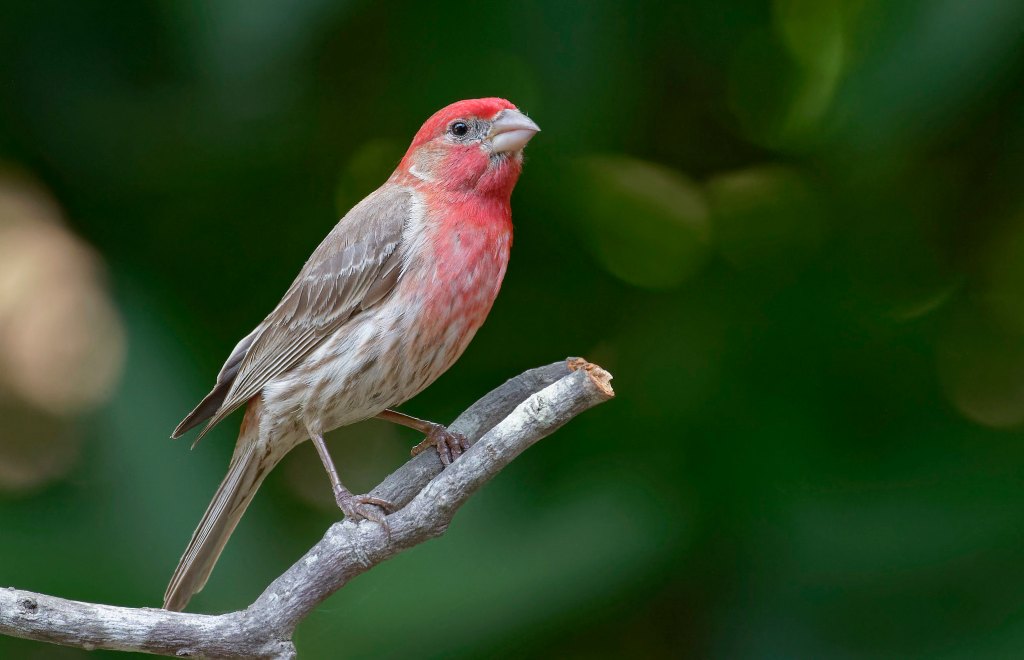A sweet, yet loud and rambling neighbor, the house finch (Haemorhous mexicanus) is native to mostly arid sections of the western United States and Mexico. With human help, they have been spread across many parts of North America.
You may have seen them at your feeder. But they may even be closer than that.
A sound coming from one of your hanging plants? That’s odd.
This was my first reaction as well. As I inched closer and took a peek in my hanging fern on the porch, my curiosity was answered when I saw a small nest with four little helpless nestlings inside.
That’s right. You may find that your backyard house finches have a thing for not only your feeders, but also your hanging plants!
Who is the House Finch?
The history of the house finch is quite an interesting one indeed. Thinking that they would make attractive pets due to the male’s bright red chests, these birds were captured in the wild and shipped to New York City in 1940.
According to the National Audubon Society, more than 100,000 wild, and mostly male, house finches were captured and sent to New York. Their name would then change for marketing purposes, and soon they were later dubbed “Hollywood Finches.” The National Audubon Society later exposed these illegal pet traders, and pet stores gradually began to set the house finches loose back into the wild.
House finches are about the same size as a house sparrow and weigh anywhere from 0.67-0.78 oz. Males are mostly rosy red around their face and upper breast, while females are mostly brown with blurry streaks down their belly. House finches are seed eaters, so you will very likely find them in small flocks having a feast and enjoying your backyard feeders.
“The house finch has always been our family’s favorite feeder bird,” says Jarod Hitchings, fellow bird enthusiast and lover of house finches. “The jeer-sounding warbling song fills our backyard with natural music.”
You can find house finches in and around other habitats including city parks and around forest edges.

Why Hanging Plants?
Staying true to their name, house finches will stay very close to buildings. So it is no surprise that these lovable birds favor our hanging plants or any other greenery that we have near our homes.
During their nesting season (April to July) female house finches may choose to build her nest in a more sheltered location like a hanging plant, a wreath, or even a porch light fixture that is positioned around your home.

Their nests are an open-cup shape made up of mostly grass, weeds, twigs, and other debris. The female will lay anywhere from two to six blue-white speckled eggs that will usually hatch anywhere from 12 to 16 days. Once the chicks hatch, they will fledge anywhere between 11 to 19 days.
Why does it seem like house finches as well as other birds favor these peculiar places to nest, particularly hanging plants like ferns?
A hanging basket that is full of ferns is a natural place for a bird to nest and it provides enough cover for them to feel secure and safe.
Additionally, hanging baskets, as well as wreaths and light fixtures are high off the ground, which makes it a challenge for certain predators to reach.
A Difficult Neighbor
If you find that a pair of house finches has built a nest in certain areas or objects around your home, be sure not to bother or approach it often, for your scent could lead other predators to the nest. Also, do not relocate the nest or the pair will abandon it.
Although we all do love our feathered friends, over time, the presence of a bird can have some negative effects on your hanging plant.
Birds can leave behind a clutter of food remnants and debris, so if you feel the need to discourage them from using things like your hanging plants in the future, there are many safe solutions you can try, including using bird netting or screening to block the area. You can also choose to remove your hanging plants or wreaths for a week or two.

A Key Focal Species for Researchers and Birdwatchers
The house finch is a very peculiar and neat bird, and not many may know just how smart they are. Not only are house finches memorable to birdwatchers, but they are also a key focal species in current research being studied in labs around the world. Work from one of these labs, The Hill Lab at Auburn University, will be discussed in another article coming soon.
Until then, remember to enjoy the presence of the house finch, and the next time you hear your hanging plants “sing,” think of it as a wonderful opportunity to observe and enjoy the wonder that a pair of house finch parents raising their young can bring to your backyard.




Will they use the same nest for more than 1 brood?
This my first hanging flower pot and a finch has nested and blessed the nest with some eggs. Can I water the plant, or is it now simply a nest?
House finches have nested in my basket hanging from a second story balcony. I love the song and am a big fan of the birds, but how can I make sure the fern is watered during the nesting season without disturbing the birds?
The males on my feeders have red rumps, also.
I’m watching 6 babies fledge today. I haven’t used my front door for a couple months because they started building a nest in the covered overhang. The babies are so big now and the nest so small they’re on top of each other. I just noticed today they’re taking short flights and returning, so I should be able to use my front door again in a few days. It was worth it!
We live in middle Tennessee and we see these beautiful birds every spring. I have a forsythia wreath on my front porch that has a nest in in right now.
I had house finches nesting in nesting box I installed on my 20th floor balcony in Toronto a few years back, not far from the downtown. Love their beautiful, intricate song.
What a great article on house finches.
I’ve watched them in my yard and on the feeders, but not in my hanging plants. But, there are wrens in my planters and they may discourage the
finches. Nonetheless, they are charming little birds! ?